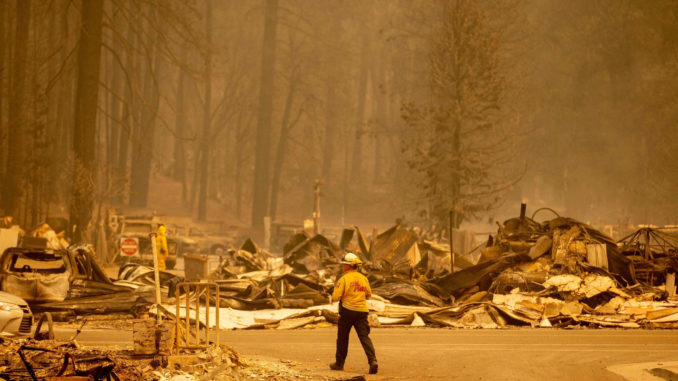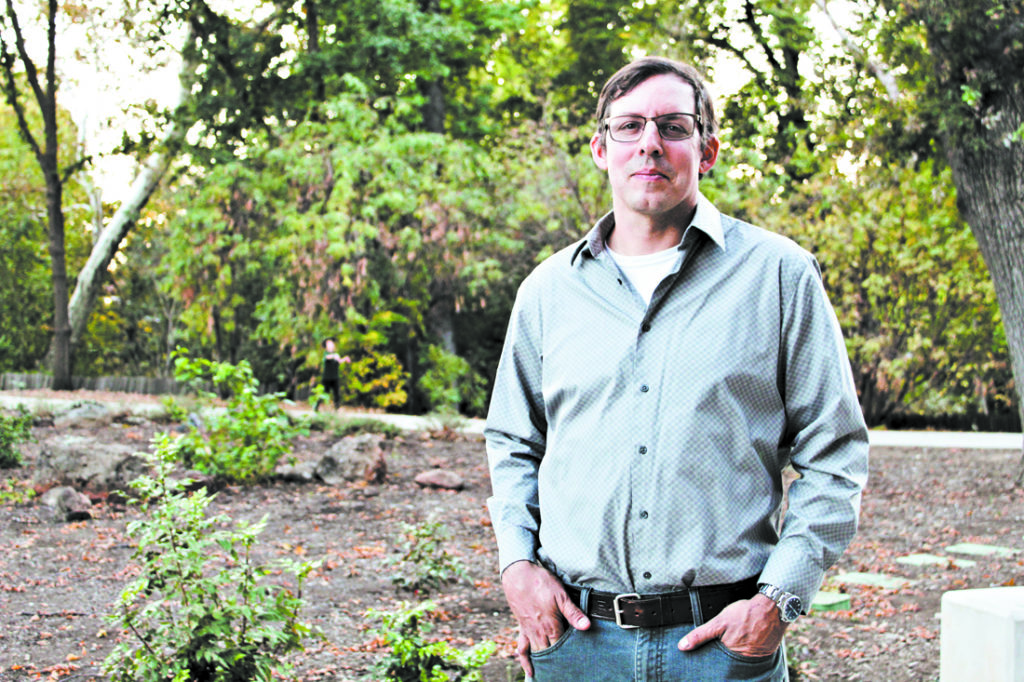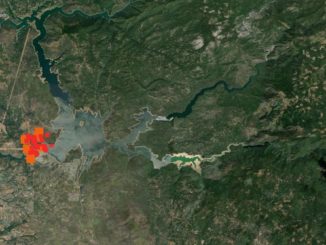
This guest comment is part of special wildfire report on the one-year anniversary of the North Complex Fire’s destruction of Berry Creek and Feather Falls. Find links for more articles in this series at the end of this piece.
Paradise, Cohasset, Forest Ranch and Berry Creek are built atop some of the most-productive brush-growing lands in the world. We got away with building stick-framed houses in places like these for a century by continually upping the ante on our fire-suppression efforts. Jumbo-jet airtankers can rain 9,000 gallons of red mud on a fire in a single drop; we can mobilize 3,000 firefighters from places like Beverly Hills or Huntington Beach to Chester in a day; but we have reached a breaking point. Our army will never outmatch fire. We might as well fight the ocean.
A hundred years waging war on fire and criminalizing its use gave us broken ecosystems and communities on the brink. We won many battles, but with climate change as an ally, fire won the war. It’s over, and as long as we refuse to surrender, fire will keep up its siege until every last mountain town and green tree burn to ash. We can blame PG&E or Gov. Gavin Newsom, but when the weather, fuels and topography align, fires like the Dixie, Camp and Bear are an unstoppable force. The longer we pretend this isn’t true, the more dangerous living in the hills becomes.

When I say we should surrender to fire, I am not suggesting we park our fire trucks and watch our last couple foothill communities get fried, rather that we should stop pretending firefighters and bigger airtankers can continue to protect us, and take matters into our own hands.
We’ve led people to believe 100 feet of brush clearance will make their house defendable. But that’s not enough, not anymore. We need to see the entire community as the treatment area, connecting our brush-cutting efforts with our neighbors and, most importantly, burning together in the winter. As long as we deny fire its rightful place in our hills, it will continue to eat our lunch.
For more information on how to use fire on your land, contact the Butte County Resource Conservation District.
The author, a pyrogeographer who has worked in wildland fire management and analysis since 1995, publishes the wildfire-education website The Lookout.
Further reading:
“Wildfire country”
“Sparking debate”
“Accountability”




Excellent article and a wake-up call for these huge fires. Thanks!
Zeke is absolutely correct – 100 feet is not enough. Your entire property needs to be free of flammable ground cover and all ladder fuels below 10 ft need to be removed.
Property owners in wildland areas owe it to themselves, their insurance companies and, most importantly, to the firefighters who risk their lives protecting our homes to remove all ground cover and all ladder fuels, to have accessible driveways with space for fire engine turnarounds and Knox Box access to structures so that firefighters can shelter in place if there is a blow up.
If you don’t have a defendable property do not expect firefighters to risk their lives in a futile attempt to save your home.
Peter Carpenter
Kyburz Ca
former USFS Redding Smokejumper
Well said, brother
I’m a firefighter (retired, 31-year career, 1960’s thru 2000’s). I’m not only trained AND experienced in urban/structural firefighting, I actually began my career in Wildland (and Wildland/Urban Interface) firefighting. From the start to my retiring I have been shocked and dismayed at how little is done by most residents/owners (in the wildland/urban interface) to protect from fire: To use the incredibly helpful guides (and communities’ examples) available today to ‘harden’ their homes, and create defensible space for firefighters. Even this week watching video of the areas under threat by the still-burning northern California fires it is clear that little or nothing has been done to clear flammable vegetation (that can be seen statewide). Or buildings having been built in areas that there is little hope of protecting from wildfire. The blame must be shared by civilians and government members alike. If property owners won’t take charge themselves then there must be stronger regulations, and a much larger effort to enforce regulations.